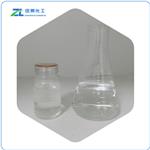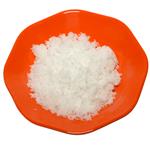Methyl 2-nonenoate has a characteristic violet-like odor. May be
obtained in quantitative yields by treating methyl P-chlorocaproate
with sodium acetate, or by dehydrogenating the corresponding
saturated ester.
Methyl 2-Nonenoate is a colorless to pale yellow liquid
with a green, floral note. It imparts freshness to floral fragrance compositions
and is recommended as a substitute for methyl 2-octynoate.The synthesis consists
of a condensation of heptanal withmalonic acid, decarboxylation, and subsequent
esterification with methanol.
Methyl trans-2-nonenoate is colorless to slightly yellow liquid;strong violet-leaf odor. Stable; soluble in alco-hol. Combustible.
Methyl trans-2-nonenoate has apparently not been reported to occur in nature.
Obtained in quantitative yields by treating methyl β-chlorocaproate with sodium acetate, or by dehydrogenating the cor�responding saturated ester.
ChEBI: Methyl 2-nonenoate is a fatty acid ester.
Taste characteristics at 5 ppm: green, waxy, oily, fruity, watermelon rind, pear- and apple-like.
Flammability and Explosibility
Not classified
2-Nonenoic acid produced by the hydrolysis of methyl nonylenate will presumably pass through the normal pathways of fatty acid metabolism (Lehninger, 1970)



